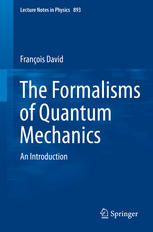

Most ebook files are in PDF format, so you can easily read them using various software such as Foxit Reader or directly on the Google Chrome browser.
Some ebook files are released by publishers in other formats such as .awz, .mobi, .epub, .fb2, etc. You may need to install specific software to read these formats on mobile/PC, such as Calibre.
Please read the tutorial at this link: https://ebookbell.com/faq
We offer FREE conversion to the popular formats you request; however, this may take some time. Therefore, right after payment, please email us, and we will try to provide the service as quickly as possible.
For some exceptional file formats or broken links (if any), please refrain from opening any disputes. Instead, email us first, and we will try to assist within a maximum of 6 hours.
EbookBell Team

4.1
100 reviewsThese lecture notes present a concise and introductory, yet as far as possible coherent, view of the main formalizations of quantum mechanics and of quantum field theories, their interrelations and their theoretical foundations.
The “standard” formulation of quantum mechanics (involving the Hilbert space of pure states, self-adjoint operators as physical observables, and the probabilistic interpretation given by the Born rule) on one hand, and the path integral and functional integral representations of probabilities amplitudes on the other, are the standard tools used in most applications of quantum theory in physics and chemistry. Yet, other mathematical representations of quantum mechanics sometimes allow better comprehension and justification of quantum theory. This text focuses on two of such representations: the algebraic formulation of quantum mechanics and the “quantum logic” approach. Last but not least, some emphasis will also be put on understanding the relation between quantum physics and special relativity through their common roots - causality, locality and reversibility, as well as on the relation between quantum theory, information theory, correlations and measurements, and quantum gravity.
Quantum mechanics is probably the most successful physical theory ever proposed and despite huge experimental and technical progresses in over almost a century, it has never been seriously challenged by experiments. In addition, quantum information science has become an important and very active field in recent decades, further enriching the many facets of quantum physics. Yet, there is a strong revival of the discussions about the principles of quantum mechanics and its seemingly paradoxical aspects: sometimes the theory is portrayed as the unchallenged and dominant paradigm of modern physical sciences and technologies while sometimes it is considered a still mysterious and poorly understood theory, waiting for a revolution. This volume, addressing graduate student